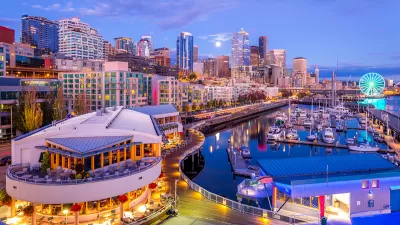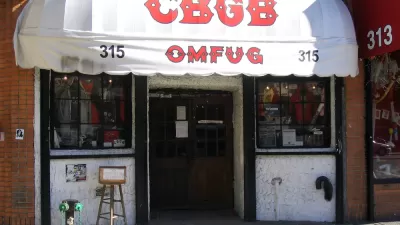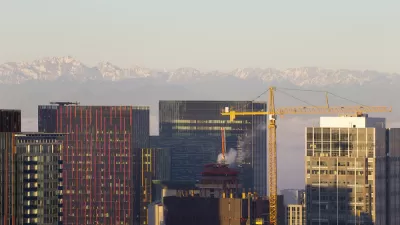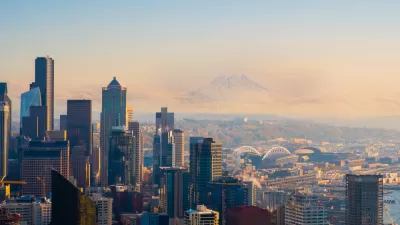In 1851 the City of Seattle could have been a vastly different place if alternative development decisions had been made that took the original inhabitants, nature, and topography into consideration.

Crosscut columnist Knute Berger writes about the development of Seattle from 1851 to the present and how certain development and transportation decisions affected the natural, social, and economic environment.
Berger writes that Seattle "had ambitions to be the new New York, but the retreating ice left us with hills and too little flat land to make a proper port. We needed railroad access, so we filled in the tide flats of what is now SoDo and the Industrial district. We were determined to place grids on a grid-resistant landscape, so we re-graded not just Denny Hill — you know it today as the flats of Belltown, but for years it was simply known as The Regrade....The result, among other things, is a transportation mess that we’ve never built our way out of and aren’t likely to. Think about that when you’re stuck in traffic. Blame the glacier. Blame the founders. Blame the absurdity of their ambition."
Berger suggests that there is something that can be learned from looking back at the development pattern of our urban places. "If those who don’t learn from history are doomed to repeat it, I would posit that those who study the might-have-beens can also learn a great deal too. Re-imaging Seattle’s transformation — the roads not taken (or built) — could be a great tool to think about our future more creatively."
FULL STORY: Rethinking Seattle: What if we could start over?

Planetizen Federal Action Tracker
A weekly monitor of how Trump’s orders and actions are impacting planners and planning in America.

San Francisco's School District Spent $105M To Build Affordable Housing for Teachers — And That's Just the Beginning
SFUSD joins a growing list of school districts using their land holdings to address housing affordability challenges faced by their own employees.

The Tiny, Adorable $7,000 Car Turning Japan Onto EVs
The single seat Mibot charges from a regular plug as quickly as an iPad, and is about half the price of an average EV.

Seattle's Plan for Adopting Driverless Cars
Equity, safety, accessibility and affordability are front of mind as the city prepares for robotaxis and other autonomous vehicles.

As Trump Phases Out FEMA, Is It Time to Flee the Floodplains?
With less federal funding available for disaster relief efforts, the need to relocate at-risk communities is more urgent than ever.

With Protected Lanes, 460% More People Commute by Bike
For those needing more ammo, more data proving what we already knew is here.
Urban Design for Planners 1: Software Tools
This six-course series explores essential urban design concepts using open source software and equips planners with the tools they need to participate fully in the urban design process.
Planning for Universal Design
Learn the tools for implementing Universal Design in planning regulations.
Smith Gee Studio
City of Charlotte
City of Camden Redevelopment Agency
City of Astoria
Transportation Research & Education Center (TREC) at Portland State University
US High Speed Rail Association
City of Camden Redevelopment Agency
Municipality of Princeton (NJ)





























